In the spring, when the snow comes down and the long months of the cold and sadness ends, each gardener wants to quickly decorate your site, a balcony or a house with bright and abundant blooming flowers. Today there is simply a huge selection of various colors that can be grown as in the open ground on the flower beds and in flower beds, so on balconies and window sills in pots and vases. Viola flowers in a pot are an excellent solution not only for an open balcony, terrace or even rooms in the house, but also a bright decoration for a garden household site. This gentle and beautiful plant has long faced many gardeners with their variety of paints, species and varieties. Viola flowers, landing and care in a pot beyond which is no different from growing this culture in the open ground, will help to embody the brightest garden compositions and raise you with your bloom.
In this article, consider the features and description of the colors of the Viola, as well as the main characteristics of popular cultural varieties. We give important rules for landing and care for VIOLA in a pot in the open ground and on the windowsill.
Features and morphological description Viol in pot
Viola is an annual, biennial or many years of herbaceous plant, which belongs to the Filk family. These are incredibly beautiful and at first glance fragile flowers prefer in nature to grow in areas with temperate climates, as well as in mountainous terrain. To date, various types and varieties of Viol can be found in the area of \u200b\u200bthe South American Andes and the tropical part of South Africa, in the subtropical regions of Brazil and Australia, as well as New Zealand. But nevertheless the most common area of \u200b\u200bhabitat Viola is considered a northern hemisphere with such a comfortable climate for these cultures.
Today there are a large number of legends and stories about the appearance of a viola, as well as the meaning of this plant. For example, the French consider this flower with a symbol of death, and the Germans carry out associations with an angry stepmother. On the territory of Slavic peoples, the legend of the appearance of the name "Pansies", as gentle and is often called Viola, most often Viol Wittrok and Viola tricolor. According to this legend, the poor girl Annie loved the young guy from the rich family, which on the appointed wedding day threw her. The girl could not survive such a loss. And over its grave, a large number of bright colors grew, which in the people called "Pansies".
The history of the appearance of Viola goes far into the past. Another 2.5 thousand years ago, European peoples began to use this gentle flower for decorating wreaths and garlands, as well as premises and houses for the holidays. The first work on the removal of hybrid varieties of Viol began to be conducted in approximately 1683, after which the VOLOs appeared fragrant and Viola Mountain. And in the 19th century, residents of Europe firstly heard about Viol Wittrtok - the most popular garden species of the Viola, which is also often grown in pots on the balconies and on the windowsill.
Description Viol:
- As noted above, Viola can be both an annual and two-year plant and perennial. By the way, the last appearance of this flower in recent years is very popular among the gardeners by virtue of pretty simple cultivation without the use of seeds.
- This herbaceous plant in height can reach an average of 15-30 cm, it all depends on the specific Viola variety.
- The root flower system has a basic type, which allows this culture enough to feel quite comfortable in any pot or vase.
- The green cap of the VIOLAS is formed from thin green stems that are covered with foliage.
- Sheet plates are not only on the stalks of the plant, but also in the roasting outlet, thereby forming a very beautiful and lush bush.
- Viol leaves can be simple or peristo-dissected in their structure.
- Form sheet plates can be oblong or oval-ovoid with a beautiful gear edge.
- During flowering, the plant produces long blossoms that rise over the grain of foliage.
- On the tops of the flowers are blooming beautiful single inflorescences - the main decorative value of the Viola.
- The flower diameter can be approximately 7 cm, however, this parameter will differ depending on the specific variety.
- Pansy's flower has all the recognizable buildings: the upper petals have peculiar marigolds, and the lower petals are characterized by a large size and the presence of spurs. It is also important to take into account that the form of a viola flower can also be different.
- Coloring colors of this plant simply amazing imagination. It is so diverse that many gardeners are simply lost when choosing the variety you need. Flowers can be two-color or tricolor, monotonous, striped and stained. Also, some varieties can please with terry flowers or inflorescences with wavy petals.
- The flowering period of the Viol in the pot can also be different, it all depends on the time of landing and the variety itself. The plant can produce flowers from mid-March to the end of May or from the beginning of August to the start of frost. Breakingers brought varieties that can bloom throughout the summer period or twice the season.
- After flowing colors on the flowers, the fruit begins to form, inside which the seeds of the Viola are located. They have a fairly high germination, which lasts for several years.
- Viola is considered a fairly frost-resistant plant and unpretentious in care.
Characteristics of species and varieties Viol for growing in a pot
The cultivation and care of the VIOLAS flower in the pot is quite simple and understandable, but it is primarily important to understand the variety of species and varieties of this culture, which is really impressive. To date, by different counts, it is known from 400 to 600 different types of viol, which are distinguished by the appearance, sizes of colors and their coloring. Consider the most common and popular varieties of a viola for growing in pots and vases.
Vyol Wittrok for growing in a pot
This kind of pansies is very popular with gardeners. To date, it is simply a huge number of different hybrid Vittrok Viol, which have different characteristics. It is a perennial herb plant, which in height can reach about 20-30 cm. However, the culture is grown as a two-man. The leaves of this flower of oval oblong shape with a beautiful served edge, while the teeth are stupid. Flowers are single, in diameter can be 7-10 cm. Their shape and painting may be the most diverse. Depending on these parameters, several groups of Vittrtok Viol varieties can be distinguished: the grandflower, multiflora, one-photon, two-tone, spotted and others. The most popular varieties of this variety are the following:
- Viola Viola "White". Single variety Vittrtoca Viol, which is an empty bush up to 5 cm in diameter and 20 cm high. Flowers with beautiful white colors with a barely noticeable green tint and yellow. Blossoms lasts from mid-April to early August, and then re-from September to October.
- Viola "Blue Fight." Beautiful variety with sizoked leaves and spectacular lilac-blue corrugated flowers, the base has dark lilac strokes. The flower in diameter is 6 cm.
- Viola "Rua de Negri". Very spectacular and memorable variety of a viola, which is a bush high up to 23 cm. Flowers up to 5 cm in diameter with rounded wavy black petals and a yellow middle.
- Viola "Jupiter". It is a miniature variety up to 16 cm in height. Flowers up to 5 cm in diameter have upper white petals, bent back, and lower velvety purple.
- Viola "Saint Knud". Stopping grade in height reach approximately 20 cm. Medium size flowers - 5 cm in diameter. Upper petals of yellowish-orange colors, and the bottom is bright orange with a red base.
- Viola "Shalom Purim". Beautiful terry Viola with strong corrugated petals. Flowers of this variety are very big. You can find a mixture of different shades of this variety or individually each type.
- Hybrid Viola "Tiger's Eyes". Pretty new variety of plants, which is spectacularly highlighted with yellow petals with brown strokes on them. Perfect for growing in pots and containers.
Horned Viola for Growing in Pot
It is a perennial plant that can grow about 15-25 cm. Due to the creeping rhizoma, the plant will quickly grow and forms a carpet. During flowering on one bush, a large number of small colors appear, in the diameter of the reaching 3-5 cm. Flowers are usually painted in all shades of purple and purple with a yellow eye in the center. The flowering of this variety is observed in May-September. The variety is very frostable, perfectly suitable for growing both in the open soil and in pots.
- Viola "Arkright Ruby". It is a large-flowered grade with a bright red shade colors, as well as with a mandatory yellow eye in the center.
- Viola "Balmont Blo". Different with plenty stems and blue color of petals. It is possible to grow perfectly in pots and vases, as well as in suspended porridge.
Viola fragrant for growing in a pot
Perennial species of a viola with a thick root. The plant has fairly large leaves that have a practically round shape and in length reach 9 cm, assembled into the root rosette. Flowers are large and fragrant, painted in all shades of purple. Blossom starts in May and lasts about a month.
- Grade "Rosina". The shape of the petals is very similar to the bird. Petals are painted in a pink shade, which becomes darker at the base.
- Sort "Charlotte". Flowers of this variety are painted in a dark purple shade.
Breeding Viola in Pot: The most common ways
Grow a magnificent Viola in a pot or container is also simple as in the open soil. It is enough to know the main methods of breeding and their features. To independently divorce Viol, there are several methods of breeding: a seed, seeding method and shilling.
Seed reproduction of a viola in a pot
- Growing a viola from seeds is best to start in February, so that after transplanting in the pots, she soon was able to bloom.
- First of all, it is necessary to buy plants seeds and soil mixture for sowing.
- Seeds for a day It is important to soak in a solution of epin.
- Purchased soil mixture pour into a suitable spacious box. If you want to further plant the seedlings of Viol in big pots on the street, then it is better to sow seeds more.
- Make a shallow groove on the surface and drink seeds in them, after which you neatly pour the soil.
- After sowing, the surface must be moistened with a pulverizer and cover the container with glass or film.
- Severate the seeds of the viola should at a temperature of 15 degrees.
- The first seedlings begin to appear in a week, after which the glass is cleaned, and the container is transferred to a cooler room with good lighting.
- At this stage, watering and feeding with mineral fertilizers is important.
- When a couple of real leaves appear on seedlings, the seedlings are recommended to dive into separate small cups.
- After about 2-3 weeks, the seedlings of the Viola can be planted in suitable pots. It is important to remember if there are volume pots, then you need to stick to the scheme 6 * 6 cm.
Breeding viola in a pot of stalling
- Another way to reproduce the Viola is to be shifting, thanks to which you can immediately get a large number of young plants.
- To proceed with the reproduction, you need to use the adult bush Viola in the pot. Thus, throughout the season, you can cut the cutlets on Viool and root them, getting new seedlings.
- The best time for this method is May or June.
- First of all, it is necessary to prepare the cuttings that are tested on an adult plant. It is important that each cutter has 3 nodes.
- Next, it is necessary to prepare the soil mixture for rooting. To do this, you can mix garden earth with perlit and sand.
- Root cuttings in a common container in such a way that one node is in the soil.
- In the future, it is necessary to regularly moisten the soil.
- After about 3-4 weeks, the cuttings are completely rooted and they can be transplanted into suitable pots and vases.
How to plant Viola in a pot - Phased instructions
Planting a viola into a pot or a balcony container is quite simple and fast, the main thing is to correctly spend all the preparatory stages. This will eventually get a beautiful plant with bright colors that will delight you and houses on the windowsill, and on the plot in the big pots.
Stage 1. Selection and purchase of the Viol planting material
- First of all, it is necessary to take care of the planting material. It can be grown independently using seeds or cuttings from existing plants.
- If there is no such possibility or you do not want to spend time on growing seedlings, then you can buy seedlings or seedlings of Viol.
- Buy Viola seedlings are best in proven garden centers or nurseries, which are professionally engaged in breeding plants.
- Before buying, you must think about which varieties of this plant you need to buy. It is necessary to repel first of all from a pot or container in which the plant will grow. If the pot is big, then it is better to buy tall varieties, ampel violas are suitable for kashpo.
- Before buying, be carefully inspective to inspect the seedlings. They should not be visible damage and signs of disease.
Stage 2. Selection Pot for Planting Viol
- The second important step to get a beautiful and magnificent flowering viola is the choice and purchase of a pot or container.
- This choice will be directly dependent on where this pot will be. If you want to put a pot on the street, then it is better to buy volumetric. For the room, pots and vases are smaller. If we are talking about the balcony, then it is better to buy long containers or kashpo.
- This is further important to determine the size of the pot for the Viola. You can navigate for the following numbers - for each planted plant should have about 1-2 liters of soil.
- Any pot or container must have good drainage holes to remove excess moisture.
- Material pot is not fundamental for a viola. It can be clay or ceramics vases, porridge from a vine or wire, plastic go wooden containers. You can accommodate fairly unusual objects as a pot, for example, an old watering can or old boot.
Stage 3. Choosing a place of placement Viol in a pot
- It is further important to decide on the placement of a pot with a viola.
- If you are going to put a pot with plants on the household plot, then pick a place with a constant scattered light. Viola does not like heat, as possible it can normally withstand a temperature of 25 degrees. That is why it is best to put a pot under the shadow of young trees or bushes so that a small shadow always fell on the flowers. If the flowers are on the sun, then quite quickly Viola will stop blossom, and her leaves dried.
- If you place a flower on the balcony, then it's best to choose the eastern or west side, as he loves the morning or evening sun very much.
- In case you want to grow Viol in a pot at home, it is necessary to take care that the windowsill also has always dispelled light and regular ventilation. In fact, you will have to constantly hold the window ajar.
- Pendant porridge with VIOLA can be placed at the entrance to the gazebo or on the terrace with a small shading.
Stage 4. Choice and preparation of the soil for planting a viola in a pot
- So that Viola in the pot grew a strong and flowering plant, it is important to take care of a high-quality soil mixture.
- Finished primer can be purchased in a flower shop specifically for such flowering plants or for violets.
- You can cook the soil yourself. To make it mix 2 pieces of humor, 2 pieces of the turf, 2 peat parts and 1 part of the sand.
- It is important that in the pot there was a quality drainage, since the root system can work.
Stage 5. The process of planting a viola in a pot
- After a complete warming, you can think about planting a viola in a pot.
- First of all, it is necessary to prepare a container or pot. To eliminate the appearance of diseases or pests, the pot is recommended to be rolling or thoroughly treated with a solution of manganese.
- Next to the bottom of the pot, pour a good drainage layer to prevent moisture delay from the roots. As a drainage, clamzit, gravel and even charcoal can be used. The drainage layer must be at least 2-3 cm.
- Next, pour a layer of nutrient and loose soil, then make on the surface of the well at a distance of 10-15 cm from each other. Consider that each plant planted in one pot or container should have approximately 1-2 liters of soil.
- After planting, young plants are abundant.
Agrotechnical cultivation of Viol in Pot: Secrets and nuances of care
The cultivation of a viola in pots on the street or on the balcony is a completely simple process that can be even a novice gardener. The main thing is to know the basic rules of care for this plant.
- Watering. If the viola in the pot grows on the windowsill or on the balcony, it is important to carry out more frequent watering. Sometimes one watering is enough per day, and the hottest and dry periods of Beauty Viol need to wip twice a day - in the morning and in the evening. If you have placed a pot with a viola on the street, then watering can be done a little less often, but the soil should not strongly dispel, as it affects the state of foliage and colors.
- Swimming. The surface looser of the soil in the pot is regularly required, so that the root system of the violate receives a sufficient amount of oxygen. On time it is necessary to remove weeds so that they do not slow down the development of the plant.
- Viola feeding. This culture will grow badly and blossom without regular feeding. Every two weeks, in contrast to growing in the open soil, Viola in the pot needs to be picked up. To do this, you can use a special fertilizer for flowering indoor plants. The first feeding should be carried out already 2 weeks after planting a seedling in a pot.
- Pruning a viola. This stage is not mandatory for a viola. It is enough to regularly overshadow the blurred inflorescences in order to extend the overall period of flowering. Also, when there is a large number of dry leaves, as a result of finding the heat. It is recommended to trim all shoots on Viola about 1/3. Very soon after that, new stems and leaves will appear on the plant.
- Transplant Viola in the pot. It is important to remember that Viola in the pot regularly glad you with a beautiful and neat look, as well as magnificent blossoms, it is necessary to transplant the plant once every three years. To do this, it is digging and carefully divided by a root system into several parts, which are then seated into other pots.
- Viola in winter. This plant is considered winter hardy, but for the winter it can be taken into room with a temperature of approximately 15-20 degrees or to cover the huskien and observing material on the balcony or on the street in pots.
Viola in a pot - Photo
Viola is a very beautiful and gentle plant that will not leave anyone indifferent. It is because of his spectacular appearance, many gardeners grow it in their sites. In addition, it is possible to plant a fragile Viola not only on the flowerbed, but also to the pot, thereby decorated with a balcony or even a windowsill.

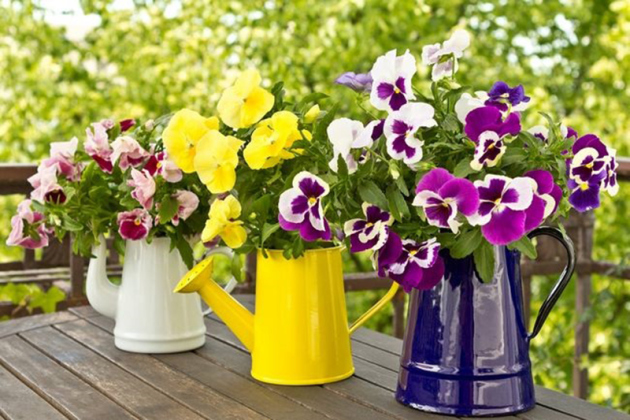
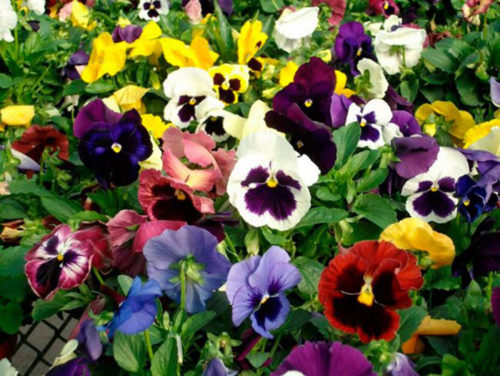
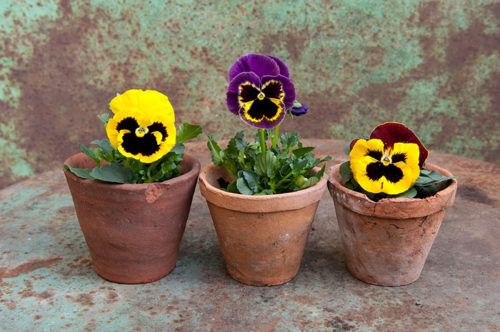
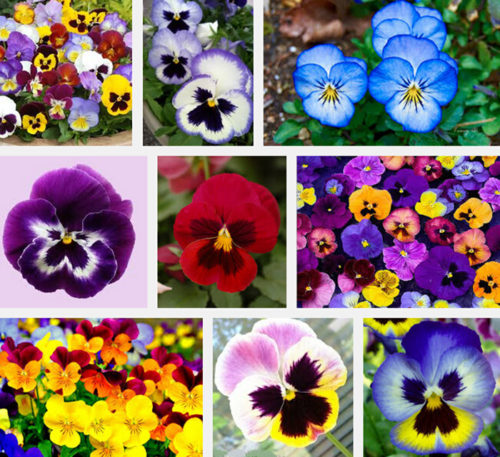
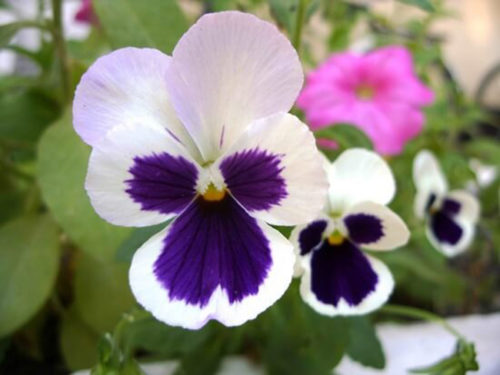
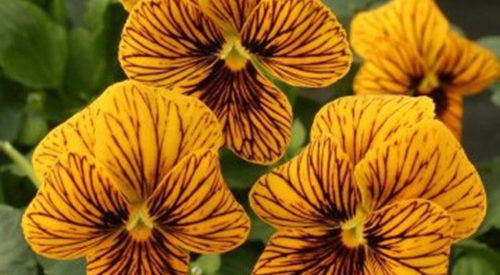
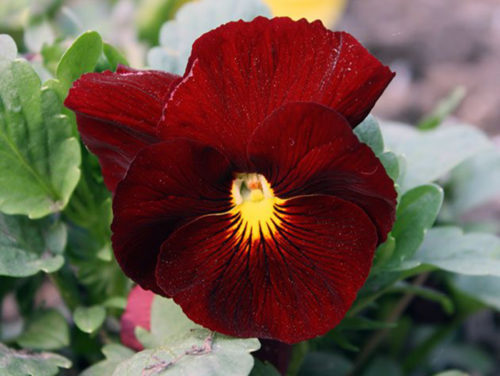
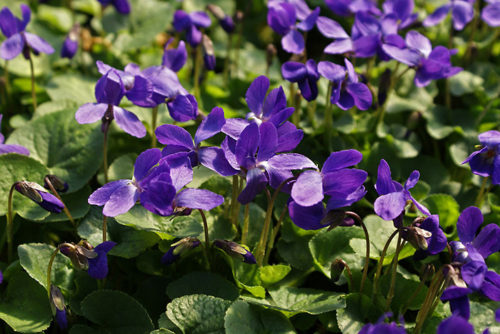
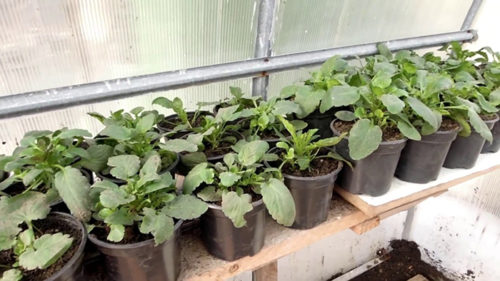
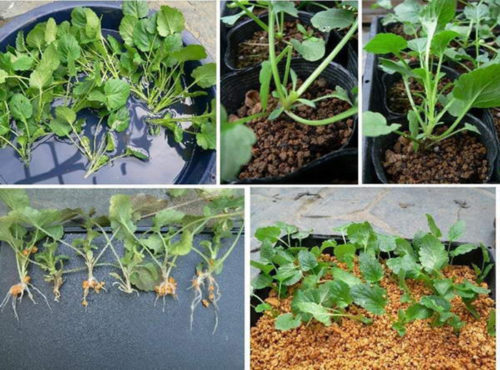
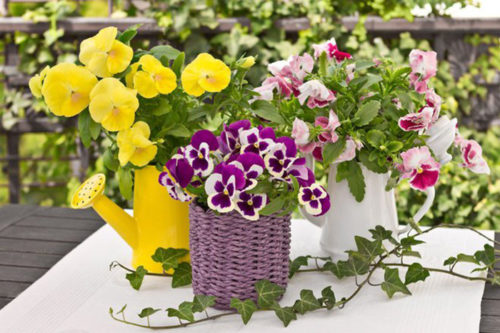
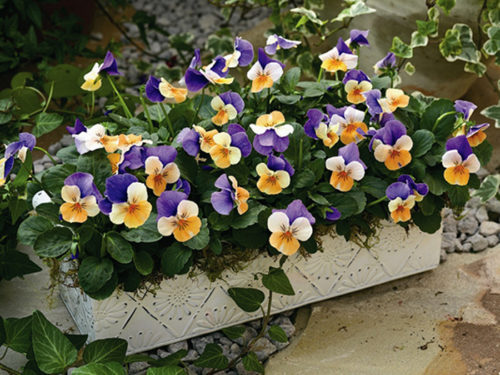
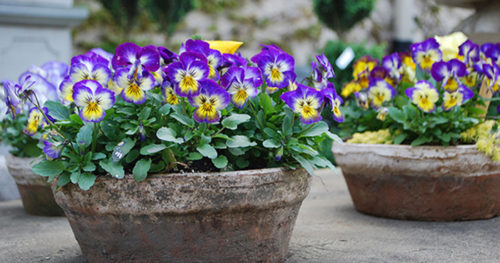
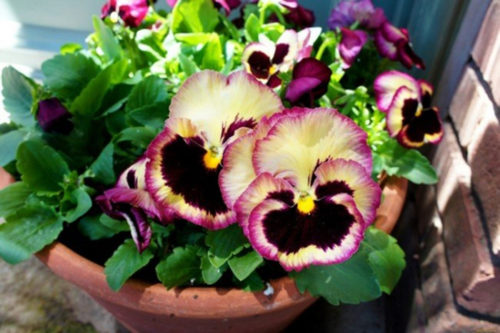
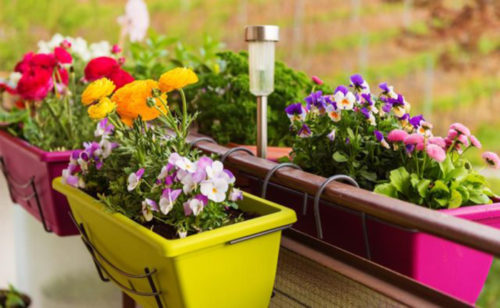
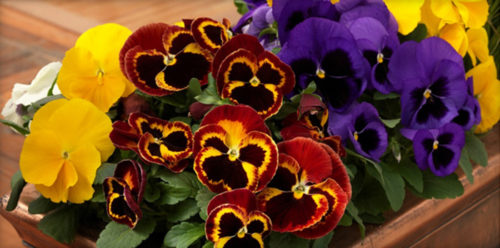
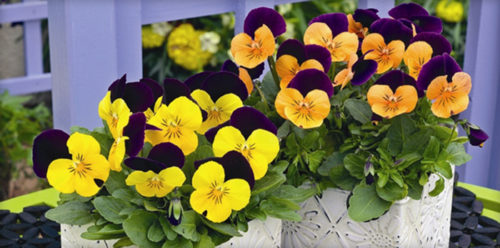
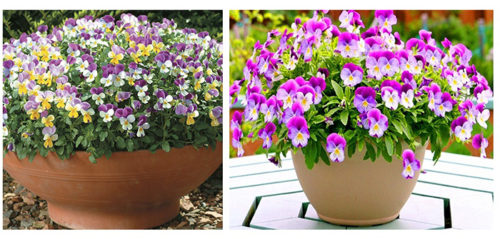
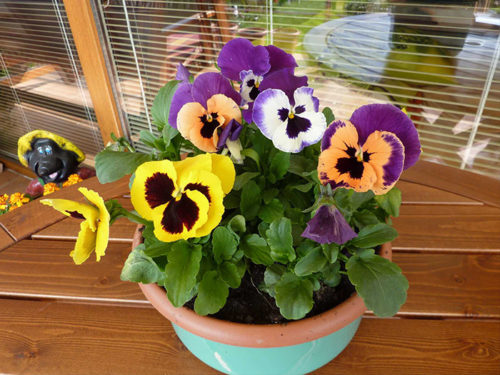












 Start a discussion ...
Start a discussion ...